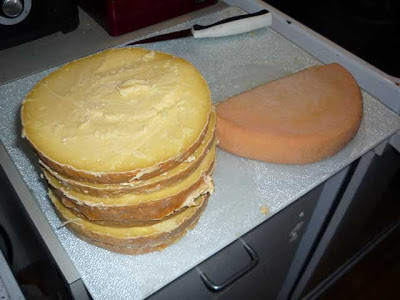This past Saturday, I ate Tartiflette for the first time. Let me tell you, this French dish from Haute Savoie, can easily become one of my favourite comfort foods. Potatoes and Melted Cheese – Mmmmm!
Tartiflette is traditionally made with potatoes, Reblochon cheese, garlic, onions, cream and lardons.
If Reblochon cheese is not available in your area, one can easily substitute it for another ripe, soft paste, washed rind cheese. Lardons can also be substituted with smoked salmon for a tasty alternative.
I would like to thank Jacinthe, our wonderful hostess and the gang from La Fromagerie Atwater for the delightful experience of relishing this yummy dish.
Tartiflette Recipe
Serves 4
1.5kg (3.5 lbs.) medium-sized red potatoes
1 large white onion, peeled and diced
2 thick rashers of smoked streaky bacon, diced
25g (1 ounce) butter
1 garlic clove, peeled and cut in half
sea salt and freshly ground black pepper
1 ripe Reblochon cheese
Preheat the oven to 200°C/400°F/gas mark 5.
Bring a large pan of water to the boil and cook the potatoes whole, in their skins, for 15 minutes.
Meanwhile, cook the onion and bacon in the butter in a heavy frying pan over a medium heat; they should sweat but not brown.
Drain the potatoes and as soon as they are cool enough to handle peel them — the quicker the better. Slice thickly across.
Choose an ovenproof earthenware dish and rub it well with the out halves of garlic. Layer half the sliced potatoes across the base, season, then scatter over the onion and bacon mixture. Add the remaining potatoes and more seasoning.
Place the whole Reblochon on top. Bake for 10 minutes, then reduce the heat to 180C/350’F/gas mark 4 for a further 20—25 minutes. The Reblochon should melt within its skin and the fat drip down while the potatoes crisp.
Tartiflette is a filling dish and all you really need to go with it is a nicely dressed green salad.
Recipe source: The Food of France by Sarah Woodward











